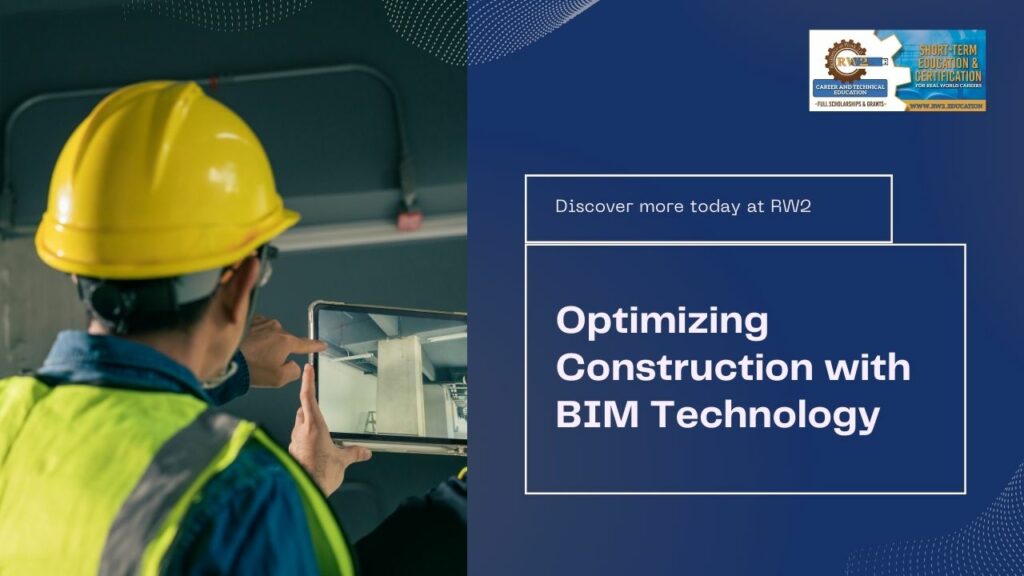
Welcome to our blog, where we explore the innovative ways in which Building Information Modeling (BIM) is being utilized to tackle the emerging challenges in the infrastructure industry.
BIM is a digital process that integrates various aspects of a construction project, from planning and design to construction and maintenance, into a single, collaborative platform. It has revolutionized the way we approach building and managing our infrastructure, providing a more efficient and accurate method.
We believe that by understanding the power of BIM, we can pave the way for a more advanced and sustainable infrastructure industry. So let’s dive in and explore the potential of BIM together!
Understanding BIM: The Foundation of Modern Construction
At the heart of modern construction lies Building Information Modeling, or BIM, a transformative digital tool that bridges the gap between the physical and digital worlds of construction projects.
BIM is not just a piece of software; it’s an entire process that allows architects, engineers, construction professionals, and project managers to collaboratively design, visualize, simulate, and manage buildings and infrastructure projects.
This collaborative environment is created through the use of intelligent 3D models that are rich in data and capable of reflecting real-world behaviors and specifications.
What sets BIM apart is its ability to streamline the planning and construction process. By integrating all project data into one model, BIM minimizes the risk of misunderstandings and errors, ensuring that everyone involved is on the same page.
This accuracy not only saves time but significantly reduces costs by catching potential issues early in the design phase, where they are easier and cheaper to resolve.
Moreover, BIM’s data-centric approach allows for enhanced decision-making. Project stakeholders can access, analyze, and act on precise information throughout the project lifecycle, from initial planning through construction and beyond into facility management.
As we delve deeper into the capabilities of BIM, it becomes clear that it is more than just a tool for building; it’s a foundational element in the evolution of construction, driving efficiency, sustainability, and innovation.
Tips for Maximizing Risk Assessment and Insurability
In the intricate world of infrastructure development, managing risk and ensuring projects are insurable are critical components of success. Utilizing Building Information Modeling (BIM) technology can significantly enhance both risk assessment and the insurability of projects.
Here are some key tips for maximizing these aspects using BIM:
Incorporate BIM from the Start
Integrating BIM at the onset of your project allows for a comprehensive understanding of the project’s scope and potential risks, facilitating more accurate risk assessments.
Use BIM for Detailed Documentation
BIM’s capacity for detailed documentation helps in identifying and documenting potential risks more effectively. This comprehensive documentation is invaluable for insurance purposes, providing clear evidence of risk management practices.
Implement Dynamic Risk Modeling
BIM enables dynamic risk modeling, allowing for the visualization of how different scenarios might impact the project. This capability is crucial for developing more robust risk mitigation strategies.
Enhance Communication and Collaboration
BIM fosters improved communication and collaboration among all stakeholders, ensuring that risk assessments are comprehensive and based on the most current project data.
Utilize BIM for Compliance Verification
With BIM, compliance with relevant building codes and regulations can be verified more easily, reducing the risk of non-compliance and potential legal issues.
Apply BIM for Safety Planning
BIM can be used to plan and simulate safety measures, helping to prevent accidents and reduce liability risks.
Apply BIM for Disaster Preparedness
By simulating various disaster scenarios, BIM can help in planning for resilience, thus enhancing a project’s insurability by demonstrating preparedness for unforeseen events.
Employ BIM for Sustainable Design
Incorporating sustainability into designs through BIM not only addresses environmental risks but can also lead to lower insurance costs due to the reduced environmental impact.
Mitigate Fire Safety Risks Effectively
BIM technology is instrumental in designing and planning fire safety measures, a critical aspect that significantly affects a project’s risk profile and insurability.
By embracing these strategies, stakeholders in the infrastructure sector can leverage BIM to its full potential, not just for design and construction efficiency but also for maximizing risk assessment and enhancing the insurability of their projects.
Future-proofing with BIM: Preparing for the Unknown
In an ever-evolving world, the infrastructure industry faces the constant challenge of adapting to unforeseen changes and emerging technologies. Future-proofing our projects has never been more critical, and Building Information Modeling (BIM) stands at the forefront of this endeavor.
Through BIM, we gain the unique ability to anticipate future needs and integrate flexibility into our designs from the outset. By utilizing the dynamic modeling capabilities of BIM, we can simulate various future scenarios, from environmental changes to technological advancements, ensuring our infrastructure can adapt and remain functional for decades to come.
This proactive approach facilitated by BIM not only enhances the longevity and resilience of infrastructure projects but also ensures they remain relevant and usable, regardless of what the future holds.
By embedding adaptability into the DNA of our projects, we’re not just building for today; we’re laying the foundations for tomorrow’s success. As we continue to navigate the unknown, BIM provides us with the tools to not just anticipate change but to embrace it, making our infrastructure not only sustainable but truly future-proof.
BIM Education and Training: Empowering the Next Generation
As the construction industry continues to evolve, the demand for professionals skilled in Building Information Modeling (BIM) is surging. Recognizing this need, RW2 Career and Technology in Kansas City has an accessible and comprehensive online program focusing on Revit for BIM.
This 15-week course is designed to equip the next generation of architects, engineers, and construction professionals with the knowledge and skills required to thrive in a digital-first environment.
Revit, a premier software in the realm of BIM, enables users to create detailed 3D digital designs and documentation for building projects. This program emphasizes the importance of mastering Autodesk Revit, guiding students through the nuances of the software. By understanding the commands and procedures crucial for creating 3D drawings and designs, participants are set on a path towards proficiency in BIM.
What sets this program apart is the practical, hands-on approach to learning. Students will emerge with the ability to:
- Employ basic sketching and modification tools effectively.
- Link CAD and Revit files to kickstart a project.
- Create levels within a model for enhanced accuracy.
- Incorporate essential elements like floors, ceilings, and roofs into a building model.
- Develop comprehensive 3D building models, including walls, curtain walls, windows, and doors.
- Enrich models with components such as furniture and equipment.
- Make simple modifications for families.
- Model essential structural features like stairs, railings, and ramps.
- Generate legends and schedules, and prepare sheets for plotting, complete with text, dimensions, details, tags, and schedules.
Recognizing the commitment required to embark on this learning journey, RW2 offers a unique opportunity to experience the first two weeks of the program with no obligation. This allows prospective students to gauge the program’s fit for their career aspirations before fully committing.
The next class, aimed at propelling students into the forefront of architectural and engineering design, starts the week of September 9. This opportunity is not just about gaining a certificate; it’s about becoming part of the next wave of professionals who will shape our built environment. Don’t miss your chance to be at the cutting edge of construction technology.
For those interested in harnessing the power of BIM through Revit and taking their professional skills to the next level, RW2 Career and Technology is an excellent starting point. To learn more or to enroll in this transformative program, contact RW2 at 816-875-0111 or via email at rw2.cte@rw2.education.




Your writing is like a breath of fresh air in the often stale world of online content. Your unique perspective and engaging style set you apart from the crowd. Thank you for sharing your talents with us.
It means a lot to hear that you find our writing refreshing and engaging. We put a lot of thought and effort into each piece, so your feedback is incredibly rewarding. I’m grateful to have readers like you who appreciate and connect with our work. Thank you for taking the time to leave such a thoughtful comment.
Pink Withney Nice post. I learn something totally new and challenging on websites
dodb buzz Hi there to all, for the reason that I am genuinely keen of reading this website’s post to be updated on a regular basis. It carries pleasant stuff.